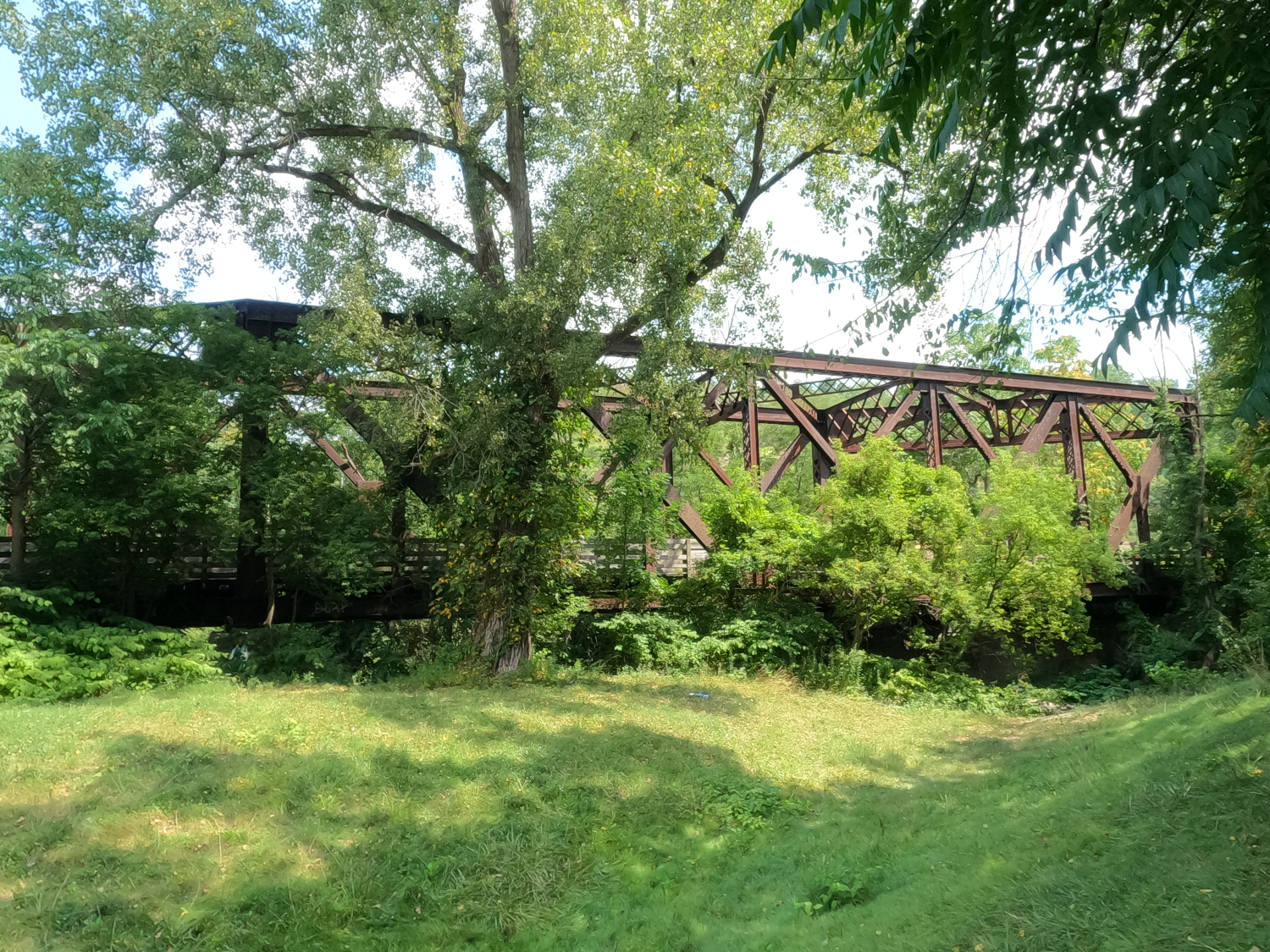
Newtown Creek Railroad Bridge
NBI Information
Location
State: New York
County: Chemung County
Feature Carried: Lackawanna Rail Trail
Feature Crossed: Newtown Creek
Latitude, Longitude: 42.0895, -76.7832
Structure Open, Posted, or Closed to Traffic: Open to Pedestrians
History
Year Built: Unknown
Picture Date: August 16, 2025
Geometry
Lanes on Structure: 1
Lanes under Structure: 0
Number of Main Spans: 1
Main Structure Type: Truss - Thru
Main Structure Material: Metal
Condition
Bridge is not on the National Bridge Inventory
Bridge Information
The Newtown Creek Railroad Bridge carried the Delaware, Lackawanna, and Western Railroad (also called the DL&W) over Newtown Creek in Elmira, New York. It is a Baltimore Truss, although it has an uncommon configuration. This bridge has a heavy skew which required additional bracing and vertical endposts. Unfortunately, there is no information about the history of this bridge, but it is likely the original bridge from the early 1880’s.
The DL&W Railroad opened its first section of track in 1851, which connected Scranton with Great Bend in Pennsylvania. Additional track was opened in 1856 which connected Scranton to the Delaware River. These tracks were originally built with wide gauge, but the entire system was re-gauged to standard gauge on March 15, 1876. At this point, the system included track rights on a variety of other railroads. In the early 1880’s, additional tracks were built in NY connecting to Utica, Syracuse, Ithica, Oswego, Buffalo, and the International Bridge to Ontario. This bridge was likely constructed during this expansion. In 1911 the Lackawanna Cutoff, a low-grade cutoff in northwestern New Jersey, was opened. The Pennsylvania Cutoff (also called the Summit-Hallstead Cutoff) was constructed from 1912 to 1915. This rebuilt the hilly and winding sections between Clarks Summit and Hallstead in PA and provided a quicker low-grade line between Scranton and Binghamton.
The profitability of the railroad started to decline in the late 1940’s and early 1950’s. Then, in August of 1955, Hurricane Diane devastated the Pocono Mountains region. The floods cut the tracks in 88 places and destroyed over 60 miles of track. The railroad rebuilt the tracks but suffered millions of dollars in damages and lost revenue and would never fully recover. In January of 1959, the Knox Mine Disaster flooded mines along the Susquehanna River, which further cut into the railroads profit. The Lackawanna mainline trackage between Binghampton and Buffalo (including this bridge) was abandoned in 1958.
An 8.5-mile section of the railroad, including this bridge, has been turned into the Lackawanna Rail Trail.
References






